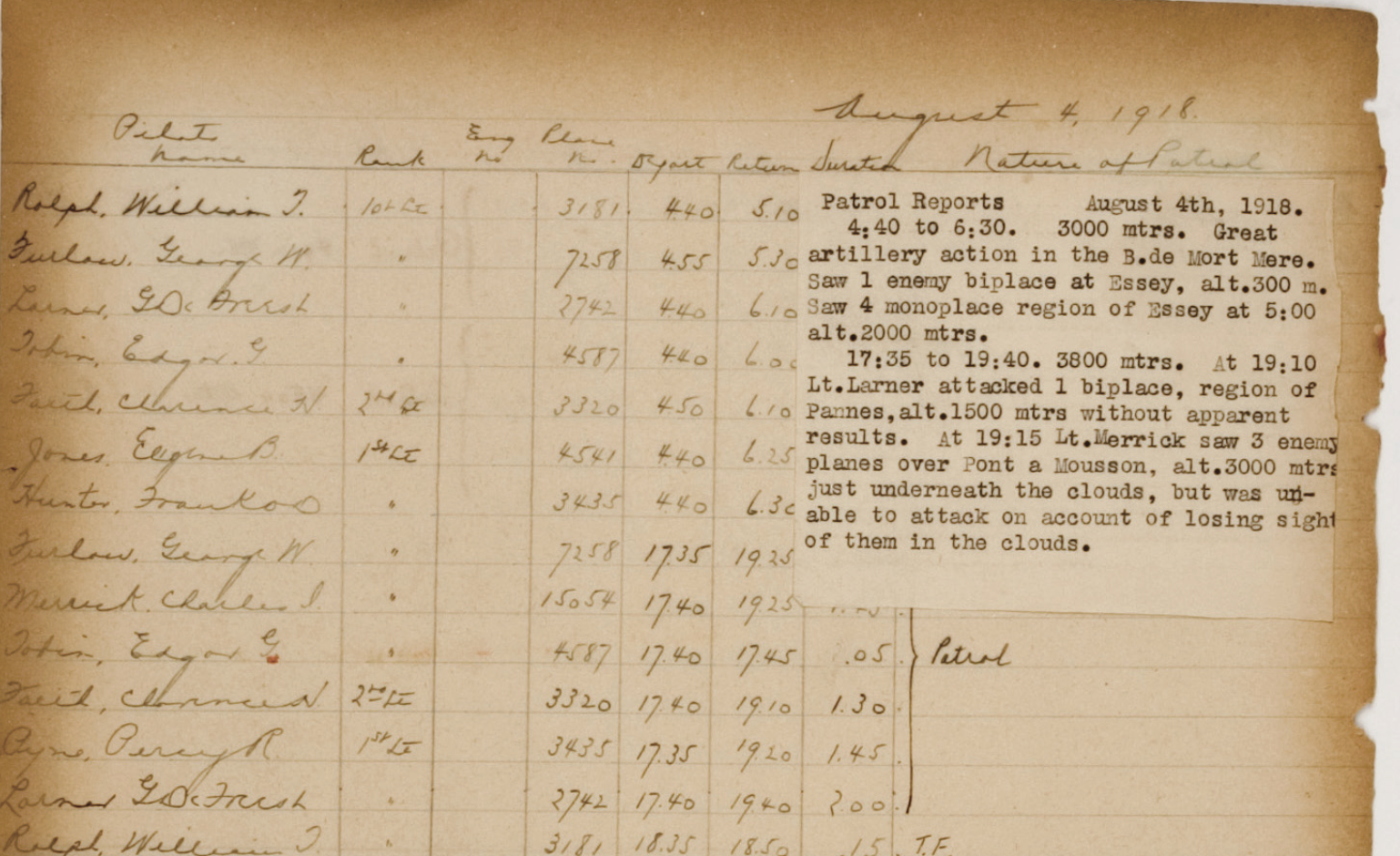Although World War One started in 1914, the United States officially joined the War in April of 1917; two and one-half years after the European powers. There was a clear potential with U.S. involvement in the war for a way to break the multi-year stalemate between the Central Powers and the Allied powers with the arrival of the American Expeditionary Force, led by General John Pershing, including the Aviation Section. Allied enthusiasm was soon tempered by the fact that there were significant deficiencies in U.S. aircraft production which fell far short of the quantity and quality desired.

A member of the 1st Aero Squadron poses with his French built Salmson A.2 in 1918.
As a result, U.S. pilots were trained by their allies and flew allied (primarily French) aircraft. British-trained mechanics supported at least 15 squadrons in France. This pattern was actually tested earlier, when in 1916 some American pilots cut their teeth in the all volunteer Lafayette Flying Corps, including the famous Lafayette Escadrille. These volunteers were trained by French officers and flew French aircraft, and served with distinction.

A page from the light Log for the 103rd Squadron, which operated in France during World War I from February 18, 1918, until after the November 11, 1918, Armistice. It was the first American operational pursuit squadron in the war, as well as the longest serving. The 103rd was the squadron that the American Lafayette Escadrille Pilots were assigned to when the U.S. entered the war. The entire log and activity report for the squadron can be viewed here.
While Army Aviation may have been late to the party in Europe, they made significant contributions to the furthering of airpower as an essential combat multiplier. Additionally, the foundation for all Army combat aviation to follow was laid in the crucible that was the skies over Europe. Air combat maneuvering skills and lessons were learned, often the hard way, as innovations in tactics, techniques, and procedures were happening almost daily. Innovative words were added to the lexicon of warfare like the Immelmann role, dogfight, or Barrell roll.
Pilot Names like Eddie Rickenbacker and the first Army Aviator to be awarded the medal of honor, Frank Luke Jr. also helped capture the imagination of the world’s public as this new dimension of warfare matured.

Members of the 88th Aero Squadron...and their mascot!
Finally, aircraft names like SPAD, Sopwith Camel, and the Fokker Dr-1 contributed to the mystic of this new form of combat and to some, a brotherhood of the skies that exists to this day.
2001 Pan American Plaza, San Diego, CA
Phone: 619.234.8291
Información En Español
Contact Us
We would like to thank all our sponsors who help us make a difference. Click here to view all who help us.

The San Diego Air & Space Museum is a 501(c)(3) non-profit organization. Federal Tax ID Number 95-2253027.
